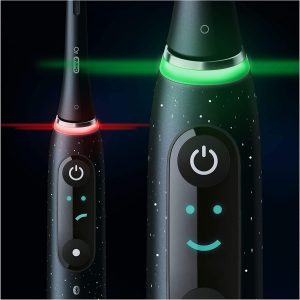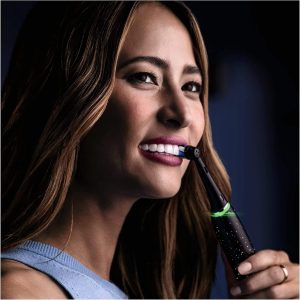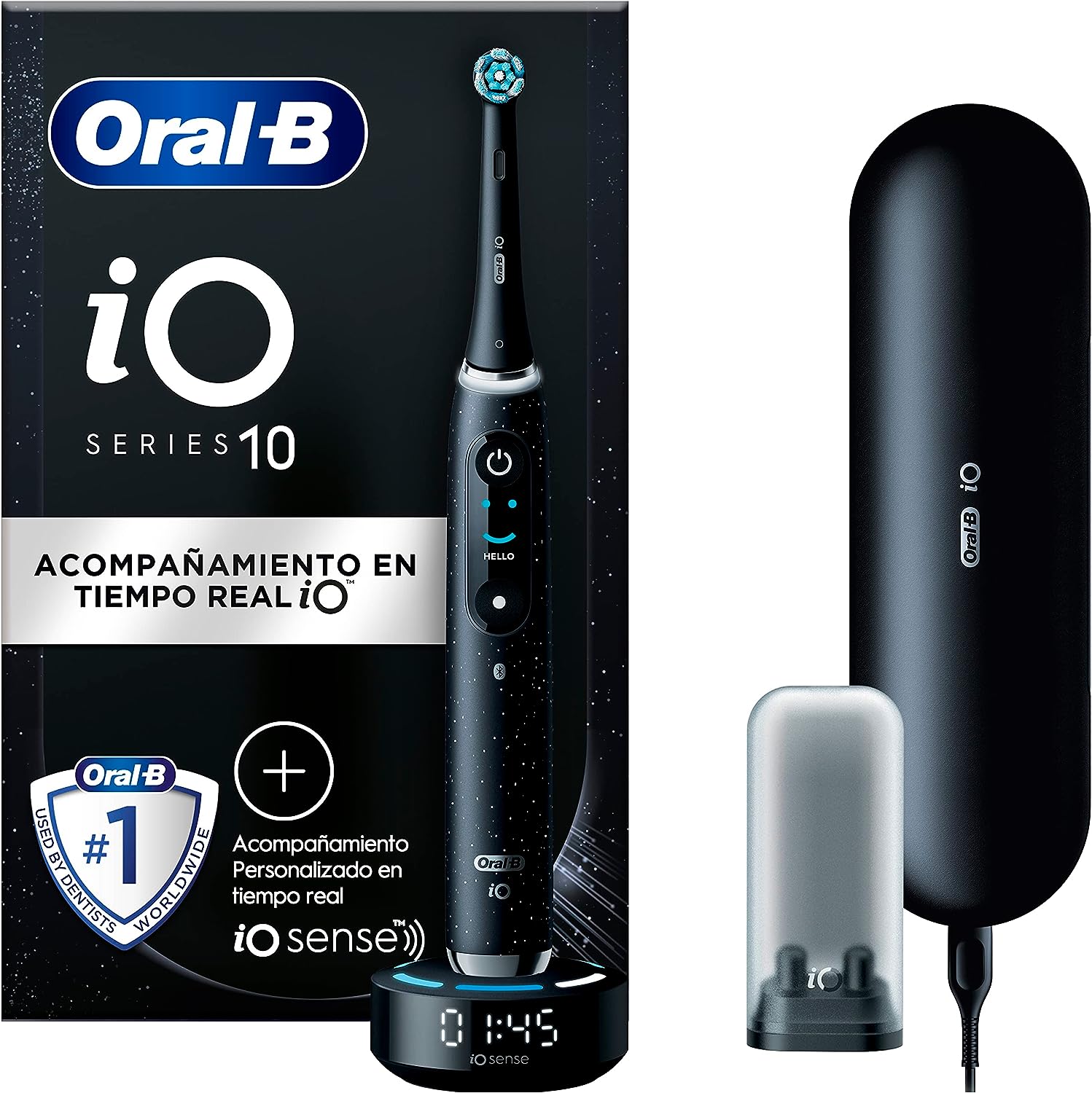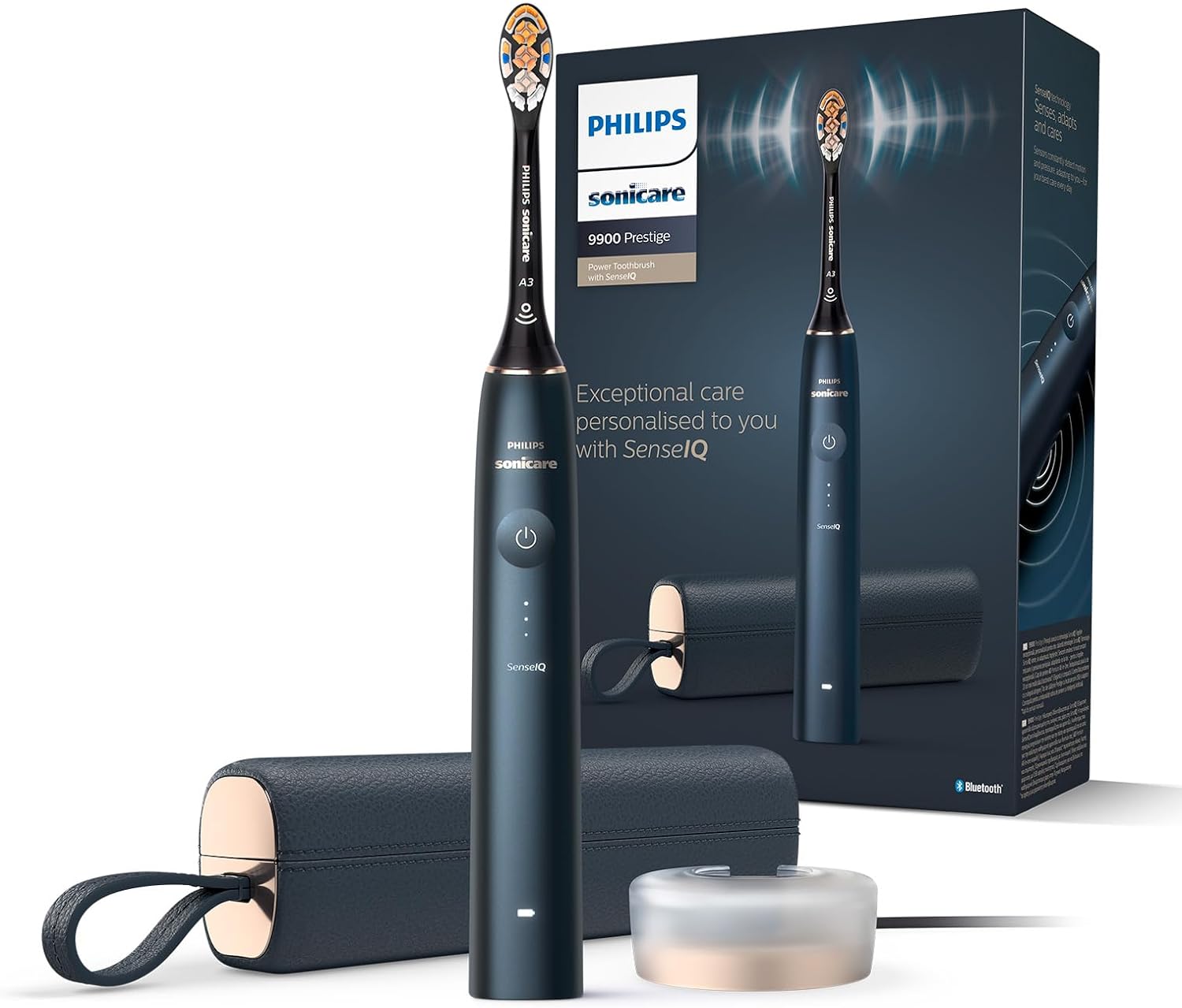Okay, let’s be honest—how often do we get excited about toothbrushes? Once every decade, maybe? But if you’re here debating between the Oral-B iO Series 10 and the Philips Sonicare 9900 Prestige, then you’re way past the drugstore aisle. You’re not buying a toothbrush. You’re investing in a high-tech, daily-use tool that literally gets in your face every morning and night. So yeah—it matters.
We’ve been testing both of these futuristic devices, and the difference is not just in how they look or feel—it’s in how they guide, correct, track, and yes, judge you (with emoji faces, no less). Oral-B comes in loud and interactive, full of sensors and displays, while Sonicare slides in elegant and reserved, like it’s been to design school and doesn’t need to prove anything.
So let’s get into it.
Looks aren’t everything… but they’re not nothing

You can tell a lot about these brushes before they even touch your teeth.
The Oral-B iO Series 10 is bold, chunky, and flashy. It’s got a round head, a bright screen that winks at you, and a LED ring that lights up depending on your brushing pressure. The finishes are slick—Cosmic Black and Starlight White make it look more like a gadget than a grooming tool. It wants to be noticed.
Philips Sonicare 9900 Prestige is the opposite—it’s all curves, softness, and subtle detail. It doesn’t have a display. It’s thinner, longer, and almost feels like it should come with a leather case. Champagne and Midnight Blue finishes? It’s a vibe. If Oral-B is your extroverted friend who’s always performing, Sonicare is the one sipping wine in the corner with perfect posture.
Only Oral-B gives you instant visual feedback directly on the handle via an animated screen. Sonicare keeps things minimal with a glowing LED ring and app communication. There’s no wrong answer here, but the energy is different—and you’ll feel it every time you brush.
How they clean: vibration vs rotation
Now for the nerdy part. They clean your teeth in two fundamentally different ways.
Oral-B’s magnetic motor delivers oscillation, rotation, and micro-vibrations. That round brush head spins and pulses in a way that feels almost clinical—like it’s targeting every angle of every tooth. It’s a direct, precision-style clean that makes you feel like you’re doing dental-level work at home.
Philips Sonicare 9900 Prestige uses sonic technology that generates up to 62.000 movements per minute. Instead of spinning, it creates fluid waves that push toothpaste and water between teeth and along the gumline. It’s gentler, smoother, and it’s especially great if your gums are on the sensitive side.
So if you like to feel the brushing—like, feel it—go Oral-B. If you want a more graceful clean that leaves your teeth tingling but your gums happy, Sonicare’s probably your match.
Smart features: who’s actually smarter?
Both are smart. But one’s smarter on its own.
Oral-B iO Series 10 comes with the iO Sense base. It lights up different sections to guide your brushing—without needing to pull out your phone. There’s something almost game-like about it: brush the left, base flashes blue. Switch to the front, flashes white. Finish on time, and it smiles at you. It’s surprisingly effective at keeping you on track.
Sonicare 9900 Prestige doesn’t offer standalone guidance. You need the app to change modes, see performance, or track areas you’ve missed. The app itself is sleek, with 3D mouth maps, pressure tracking, and motion detection. But if your phone’s not nearby? You’re basically brushing blind.
Both have pressure sensors, but Oral-B gives you live feedback through its ring and screen. Sonicare vibrates subtly and lights up, but doesn’t communicate as directly in real time.
So, if you like real-time guidance and no-phone operation, Oral-B takes it. If you’re fine syncing after the fact and prefer a more app-centric experience, Sonicare still delivers.
Charging and battery life: fast vs slow, long vs longer

This one surprised us.
The Oral-B iO Series 10 charges in just three hours. That’s fast. It uses a sleek magnetic charger that also doubles as your guide base—so you’re getting feedback and power in one go.
Sonicare 9900 Prestige takes sixteen hours to fully charge. We’re talking overnight, and then some. That said, its battery can last up to 21 days, while Oral-B usually hits around 14 with standard use.
So, if you’re always forgetting to charge, Sonicare might save your life. But if you value fast top-ups and integrated charging-feedback functionality, Oral-B is lightyears ahead.
Display or no display: does it matter?
We didn’t think it would. But it does.
The display on the Oral-B shows you brushing time, pressure alerts, greetings, and even happy or sad faces. It’s like your own tiny accountability coach. And weirdly… we missed it when switching to Sonicare.
Philips sticks to an ultra-clean handle with just one button. It’s gorgeous. But it gives you zero info mid-brush. Everything’s in the app—which isn’t always convenient in the bathroom at 7am.
It’s not just aesthetics. Oral-B’s display helps you brush smarter, faster, and more consistently.
Brushing modes: how much control do you want?
Both are customizable—but in different ways.
Oral-B gives you seven preset modes: Daily Clean, Intense, Sensitive, Super Sensitive, Gum Care, Whitening, and Tongue Clean. The kicker? You only get one intensity level. It’s either on or off.
Sonicare offers five modes—Clean, White+, Gum Health, Deep Clean+, and Sensitive—but adds three intensity levels to each. So you can go deep-clean but low-power, or sensitive with a little kick. It’s more flexible, especially if your needs change day to day.
If you want variety in function, Oral-B wins. If you want variety in strength, Sonicare’s your brush.
Timing and zone reminders: quadrant vs sextant

Oral-B splits the mouth into four quadrants—30 seconds each. You get LED signals from the ring and the display when it’s time to switch. It’s very visual and you’re never wondering where you are in the cycle.
Sonicare divides things into six zones—20 seconds each. It uses gentle vibrations to alert you to switch, and it powers down automatically when you’re done.
The difference? Oral-B is louder, clearer, and more involved. Sonicare is quieter and slightly more intuitive—but also less direct. Pick based on how much structure you want in your routine.
Travel and daily life: the little things matter
Both come with Bluetooth, battery indicators, travel cases, and brush head replacement reminders.
Oral-B’s charger is bulkier but offers a more integrated user experience. Sonicare’s charger is smaller and more discreet—but less interactive. If you travel often, the Sonicare case is lighter, but the Oral-B one feels sturdier.
For everyday use, the Oral-B creates more of an all-in-one brushing station. The base stays on your counter and becomes part of your routine. Sonicare is more portable, more discreet, and fits minimalist setups better.
And the winner?
This was not easy. Both brushes are incredible. They clean well, look great, and offer smart features that genuinely make a difference.
But if we had to pick the one we’d want to live with every day?
The Oral-B iO Series 10 wins. Not because it brushes better—Sonicare holds its own there—but because it feels like it’s helping you brush better. The visual feedback, fast charging, built-in display, and intelligent base turn a chore into a guided ritual.
Sonicare 9900 Prestige is a close second for those who value elegance, extended battery life, and sonic comfort. But it asks more of you. It assumes you’ll open the app, follow along, and keep track.
We loved them both. But the iO 10? It kind of loved us back.


